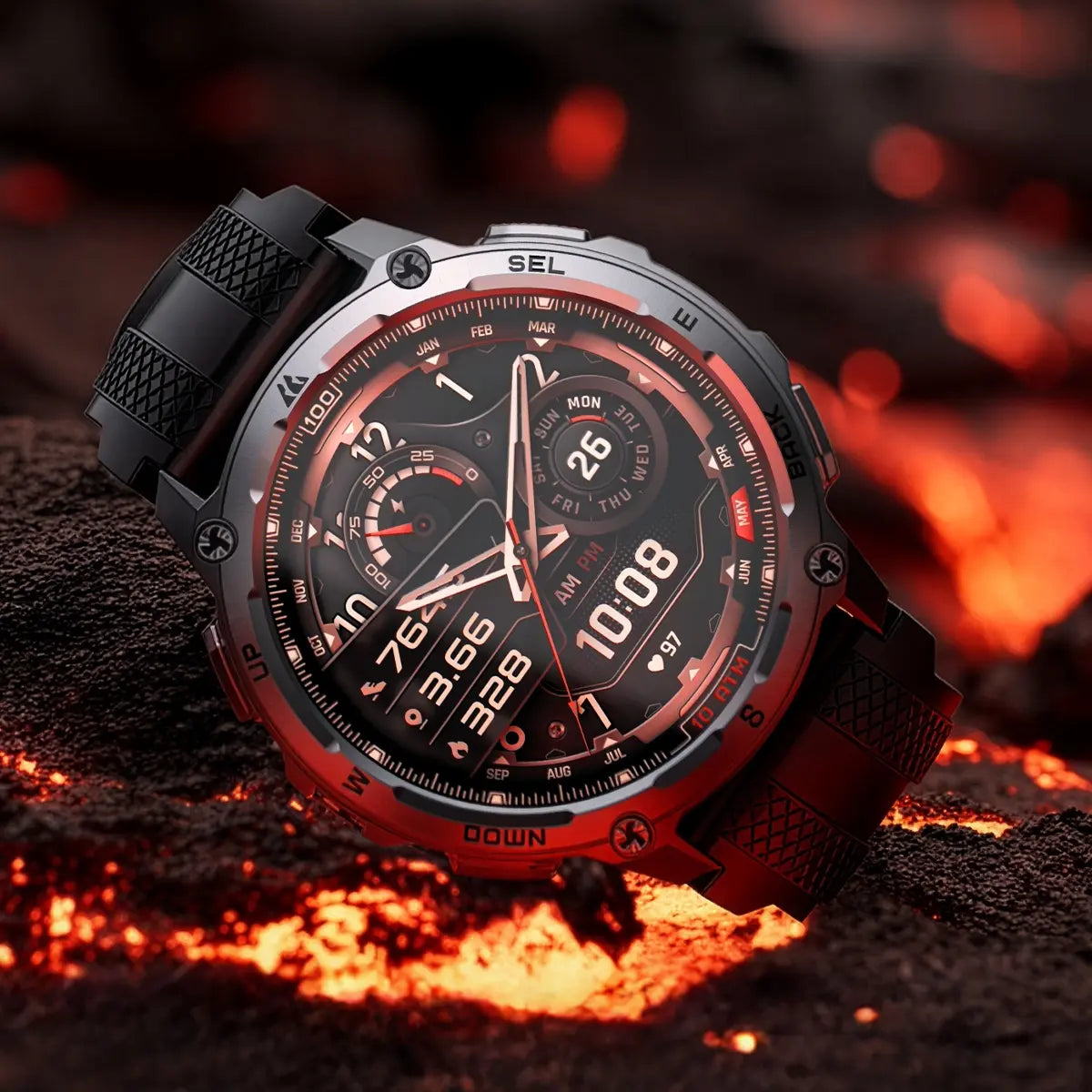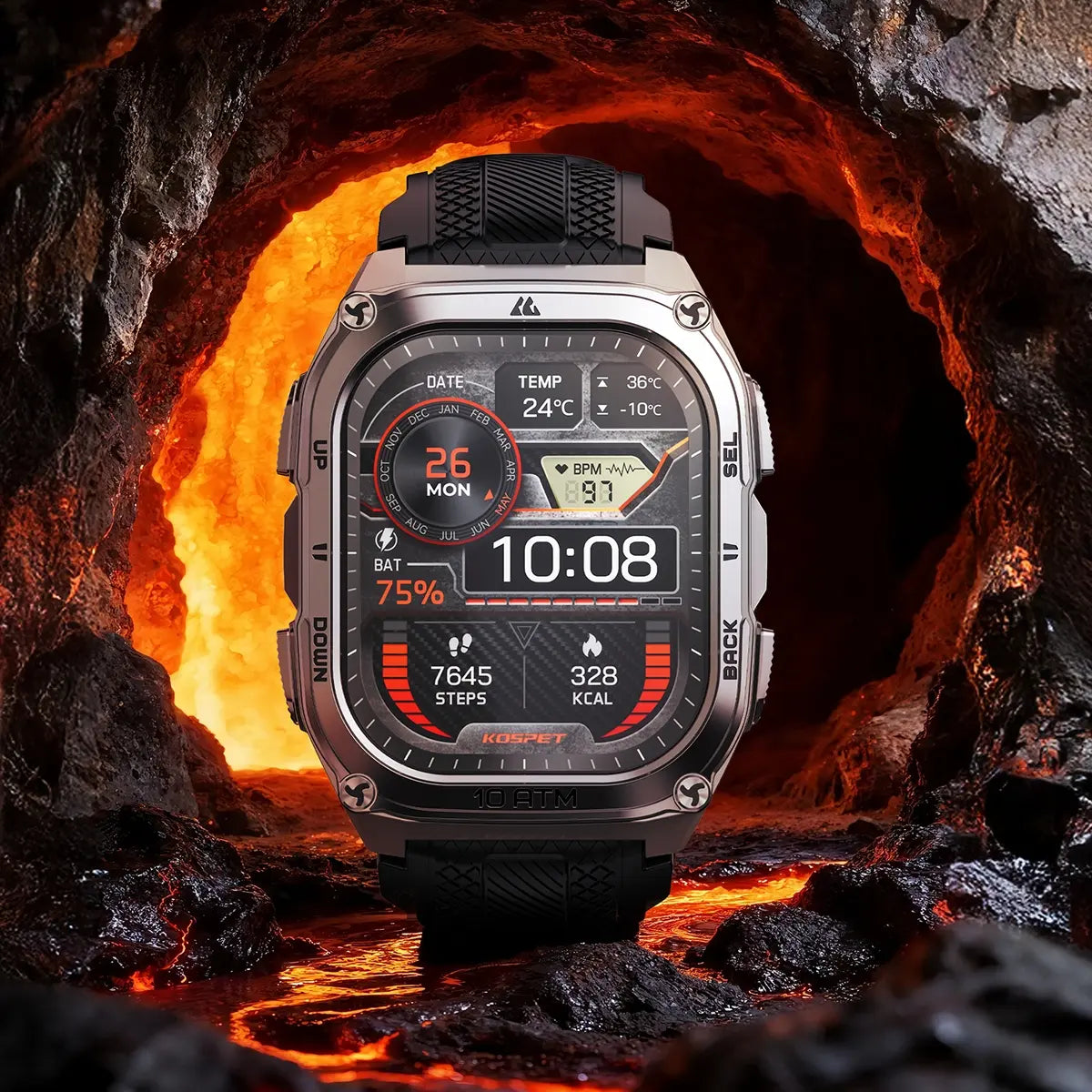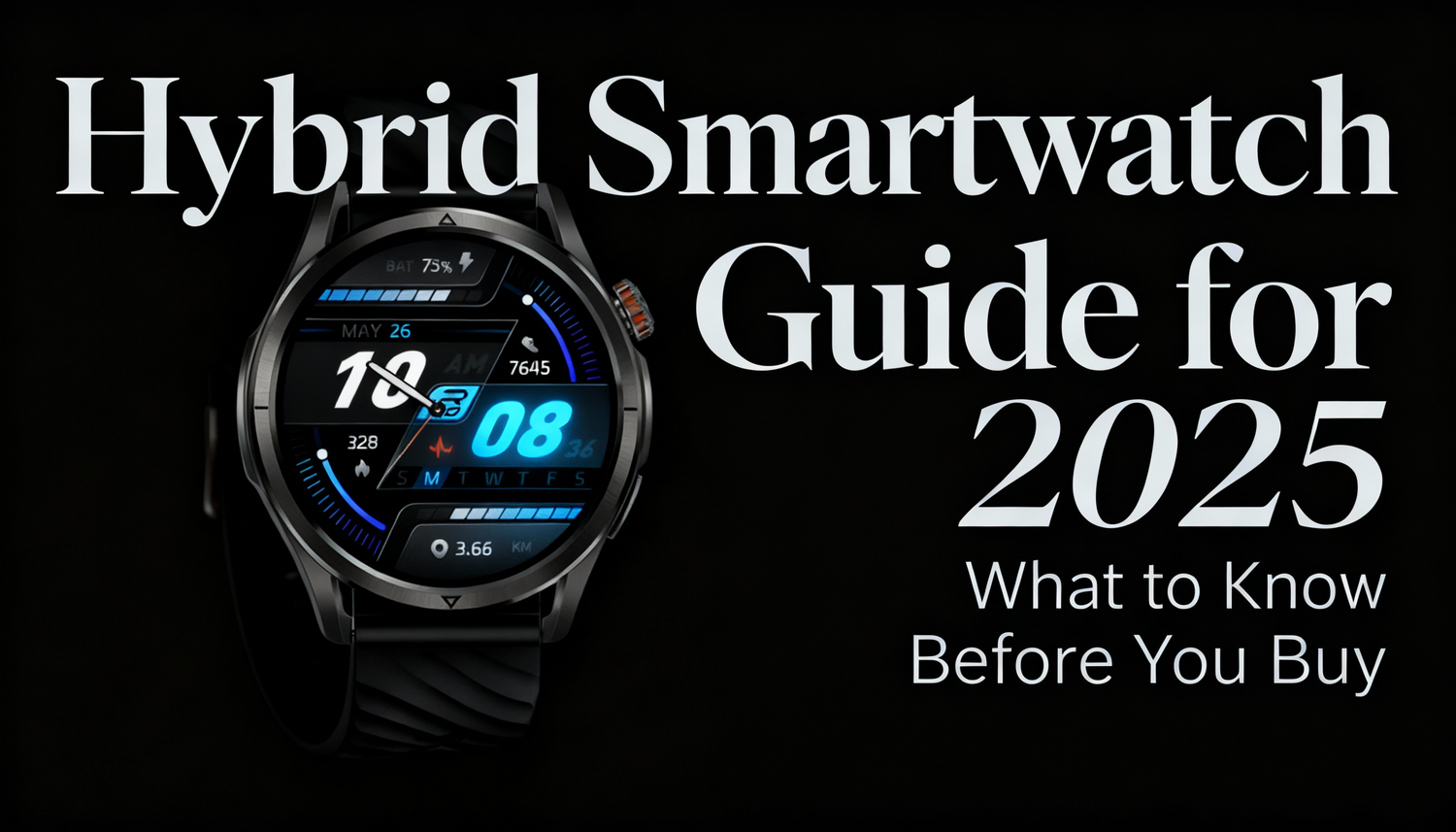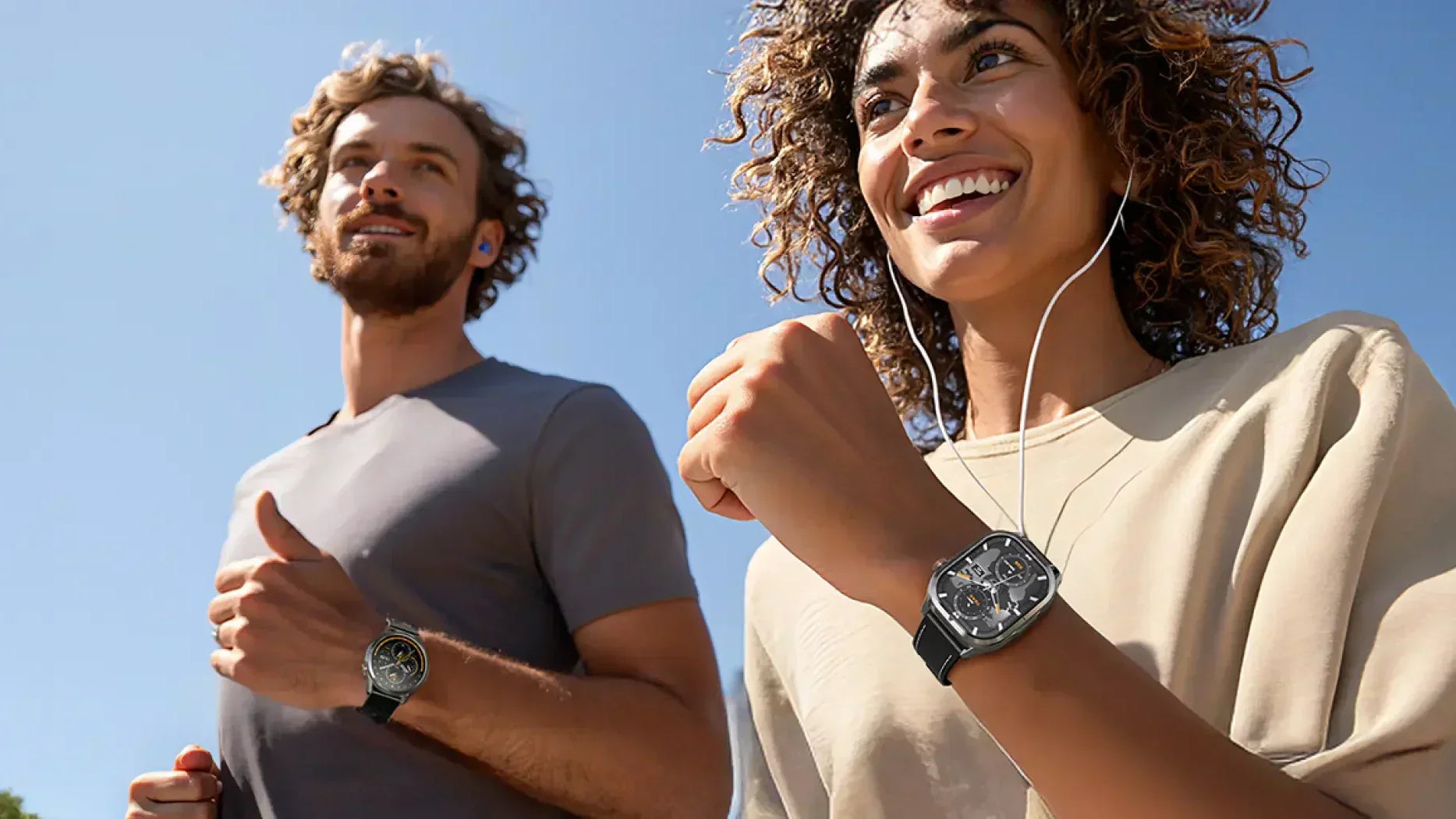If you’ve ever felt stuck between wanting the timeless look of a classic wristwatch and the convenience of smart features, you’re not alone. Many buyers face this exact dilemma.
Traditional smartwatches like the Apple Watch or Galaxy Watch offer rich functionality but often demand daily charging.
Classic analog watches look great but do nothing beyond telling the time. Hybrid smartwatches promise to be the “middle ground” — blending traditional design with just enough smart tech to be useful.
And this is more than a niche. According to Wareable’s 2025 hybrid smartwatch report, brands like Withings and Garmin are positioning hybrids as the go-to choice for people who want longer battery life and understated design.
Before you buy, though, it’s worth digging into what hybrids really do well — and where they fall short.
What Is a Hybrid Smartwatch?

A hybrid smartwatch looks like a traditional watch with analog hands or a minimalist face, but hides sensors and smart modules beneath. Think of it as “a classic watch on the outside, a fitness tracker on the inside.”
Typical capabilities include:
- Step counting
- Heart-rate and sleep tracking
- Call, text, and app notifications
- Weeks of battery life
As TechRadar noted in its latest review, one of the biggest selling points of hybrids is battery longevity that many last for weeks on a single charge .
And real users echo this sentiment. One Reddit commenter wrote:
“I’d go with the Withings ScanWatch. Looks like a classic watch but has solid fitness tracking, long battery life, and even ECG monitoring.”
This blend of form and function is exactly why hybrids are gaining traction.
Key Features You Should Know Before Buying
Before you pick a hybrid smartwatch, keep these essentials in mind:
Battery life is the deal-maker
- Most hybrids last 2–4 weeks, some even a full month.
- Perfect for commuters and travellers who don’t want to carry chargers.
- “My hybrid lasts nearly a month, and that alone makes it worth it.” — Reddit user
Health tracking is focused, not exhaustive
- Expect step counting, sleep tracking, heart rate; higher-end models add ECG and SpO₂.
- Don’t expect multi-sport training or advanced VO₂ max like Garmin or Polar.
- As TechRadar notes in its ScanWatch 2 review, the strength is medical-grade metrics, not sports analytics.
Notifications are subtle by design
- Hybrids alert you with discreet buzzes or tiny displays.
- Good for reducing distractions, but you can’t reply to texts or manage apps.
- Works best for those who want less screen time, not more.
Design and discretion are core values
- Built to look like traditional watches, blending with business or casual wear.
- Ideal if you dislike the “techy” look of full smartwatches.
A hybrid smartwatch gives you long battery life, essential health features, and discreet notifications — but not app ecosystems, payments, or advanced training.
Hybrid Smartwatch vs Other Options
Choosing a hybrid smartwatch only makes sense when you understand what you’re giving up — and what you’re gaining. Let’s break it down beyond the obvious “battery vs features” trade-off.
Hybrid vs Smartwatch
Ecosystem depth: Full smartwatches like Apple Watch, Galaxy Watch integrate into app ecosystems. They’re great if you want Spotify offline playback, Apple Pay, or Strava live metrics. Hybrids rarely go beyond basic notifications.
Cognitive load: A smartwatch demands attention — buzzing with every alert, tempting you to swipe and scroll. Many UK buyers switch to hybrids because they want fewer interruptions.
“Numerous studies show that receiving notifications across multiple devices aggravates disruption and fatigue — a study on smartwatch notification assessment found that overlapping alerts from phones and watches increase user frustration.
Longevity: Smartwatches age quickly. OS updates, battery degradation, and app dependency mean you may replace them every 2–3 years. A hybrid, with its simpler core, often lasts longer.
If you’re productivity-driven and app-reliant, stay with a smartwatch. If you crave low-maintenance wear and “just enough smart,” hybrids win.
Hybrid vs Fitness Tracker
Accuracy vs lifestyle: Fitness trackers like Fitbit Charge or Xiaomi Band deliver granular fitness data (VO₂ max, workout recognition). But let’s be honest: they look like fitness bands. Hybrids let you wear one device from the gym to a board meeting.
Social perception: In the UK workplace, a Fossil Hybrid HR blends in with a suit — a Fitbit doesn’t. This isn’t trivial: research from Statista UK shows “wearables as fashion accessories” is a top adoption driver for 25-40 year olds.
Durability: Hybrids usually use stainless steel or sapphire glass, while trackers rely on plastics. For long-term ownership, hybrids simply age better.
If fitness metrics are your core priority, trackers win. If you care about social context and durability, hybrids offer a stronger value.
Hybrid vs Traditional Watch
Maintenance: A classic automatic needs servicing; a hybrid does not.
Value perception: A Tissot or Seiko mechanical carries heritage and resale value; a hybrid doesn’t.
Utility: A hybrid may nudge you to move, warn you about heart rate spikes, or track sleep. A purely analog watch never will.
If you want legacy and craft, buy mechanical. If you want data without giving up elegance, hybrids deliver.
Who Hybrid Smartwatches Are Best Suited For
Hybrid smartwatches are not for everyone, but when they fit, they solve very specific problems. Here are the groups that benefit the most:
Professionals Who Value Discretion
If you often find yourself in meetings or client-facing roles, a glowing smartwatch screen can feel out of place. Hybrids look like classic timepieces yet discreetly buzz when something important comes through.
“I use mine to look at my phone less. A notification comes in, at a glance I know if it’s worth checking.” — Reddit user
Travellers and Commuters Who Hate Charging
Daily charging is the number one frustration with full smartwatches. Hybrids offer weeks — sometimes a month — of battery life. For those who travel often or commute long hours, this means freedom from carrying extra chargers.
The KOSPET Magic Series has been highlighted for its efficient power management, making it a practical option for users who want reliability first.
Health-Aware Minimalists
Not everyone wants advanced sports metrics or app overload. Many buyers simply want sleep, step, and heart-rate tracking they can trust. Hybrids deliver that balance: simple, validated health features without drowning you in data.
For instance, the Withings ScanWatch
is praised on Reddit for combining ECG and SpO₂ monitoring with the elegance of a traditional dial.
In short: Hybrid smartwatches are best suited for users who want style and subtlety, who dislike constant charging, and who value essential health data without the complexity of a full smartwatch.
How to Choose the Right Hybrid Smartwatch in 2025
The right hybrid smartwatch is the one that matches your lifestyle priorities, not the one with the longest spec sheet. Specs can look impressive, but your actual daily context is what determines the right fit.
Why this matters:
Your daily context matters more than specs.
A London commuter needs strong vibration alerts to avoid missing calls on a noisy Tube.
A frequent traveller values a watch that runs 2–4 weeks without charging. The KOSPET Magic Series, with its efficient battery management, appeals here because it balances endurance with everyday health tracking.
A professional in a client-facing role needs a timepiece that blends with business attire; hybrids allow for a discreet, traditional look.
Battery life and intelligence sit on opposite ends of a scale.
The more interactive functions you want animated displays, app-like behaviour, the shorter the battery. A UK buyer who hates nightly charging should lean towards models like the Withings ScanWatch, while someone comfortable recharging every 10–14 days may prefer a Fossil Hybrid for its richer notifications.
Software and ecosystem shape the ownership experience.
The hardware may look refined, but if the companion app is buggy or lacks proper iOS/Android integration, the watch quickly becomes frustrating. Withings’ Health Mate app scores highly in the UK for reliability; Fossil’s app is often criticised in Trustpilot reviews for sync delays.
Longevity should guide your budget.
Hybrids typically age better than smartwatches since they rely less on operating system updates. Paying £250–£350 for a Withings or Garmin hybrid often secures a device that remains useful for 4–5 years, outlasting many touchscreen smartwatches that feel outdated in half that time.
Think replacement, not addition.
If you’re moving from a smartwatch, accept fewer functions but enjoy freedom from daily charging. If you’re replacing a mechanical watch, see the hybrid as a modern parallel, not a downgrade. If you’re moving from a fitness tracker, weigh whether elegance is worth trading off against absolute accuracy.
Conclusion
Hybrid smartwatches in 2025 are best seen as the middle ground — offering classic style, weeks of battery life, and just enough health and notification features to stay useful. If you’re tired of constant charging and screen overload but still want smarter insights than a traditional watch can give, a hybrid is the right fit.
FAQs
Is a hybrid smartwatch worth it?
Yes, if you want classic style, weeks of battery life, and essential health tracking without the distraction of apps. They aren’t as powerful as full smartwatches but solve common pain points like charging and screen fatigue.
What does hybrid mean in a watch?
It’s a watch that looks traditional with real hands but includes smart features like step counting, heart-rate and sleep tracking, and subtle notifications.
Are hybrid smartwatches compatible with iPhones?
Most hybrids work well with iPhones through companion apps, syncing steps, health data, and notifications. Some advanced features may be limited compared to Android.
Are hybrid smartwatches durable?
Yes, many use stainless steel cases, scratch-resistant glass, and 5 ATM water resistance, making them reliable for daily wear and casual sports.










Leave a comment
This site is protected by hCaptcha and the hCaptcha Privacy Policy and Terms of Service apply.